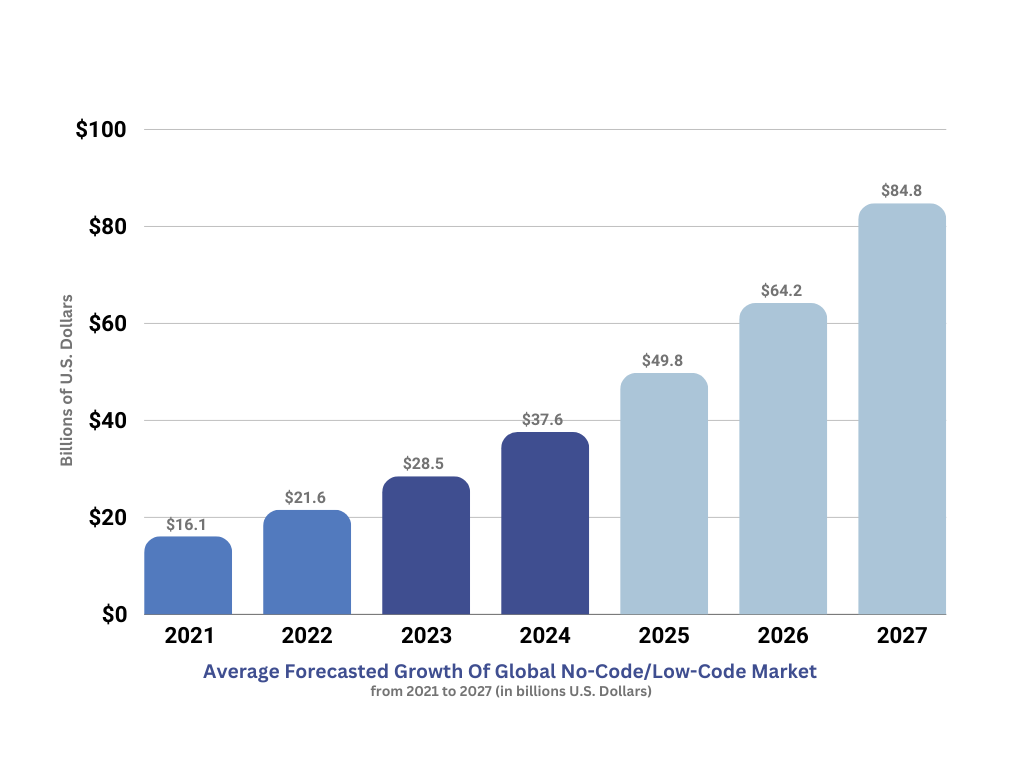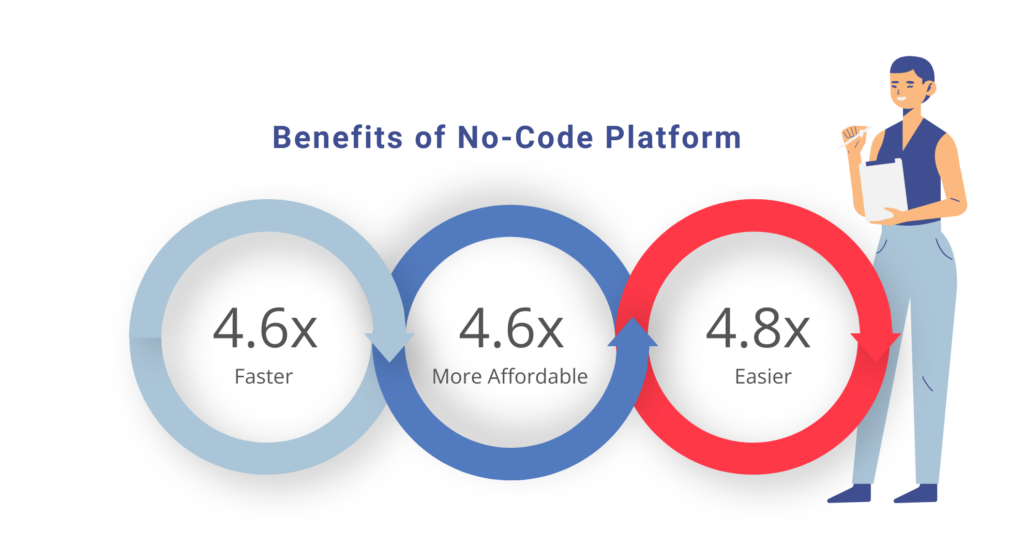The power to build mobile applications is no longer exclusive to coding experts. Yes, you heard it right! Say hello to the age of no code, where regardless of non-technical or technical background, you can turn your vision into reality.
The gap that existed between the idea and its implementation is bridged by no code software. Writing codes can be cumbersome and needless to say it takes months to create an app. With no code, you can build, customize, and deploy apps in no time.
Table of Contents
ToggleHere, we are going to talk about why you should consider jumping on the no-code bandwagon to build mobile apps.
Let’s get started.
Before we venture into the benefits of no-code to build applications, let’s establish a solid understanding of what it is.
What is No-Code?
With each passing day, it is becoming more and more pivotal to be adaptable to the changing market. It is like a necessity. Traditional coding methods often struggle to keep pace with the market’s unpredictable shift. So you never know what changes occur during the period of application making, which can lead to disrupted product launches and cost delays.
In an interview with TimesTech, Mr. Lalit Mehta, Co-Founder, and CEO, of Decimal Technologies said ‘This trend dismantles traditional programming barriers and lets businesses truly focus on the operations and core systems. No-code Development acts as a hinge in bridging technophiles with those unfamiliar with technology.’
No code has brought a paradigm shift in how we build software applications. It is a visually driven software where you can envision the implementation process in real time. Customizable themes, drag-and-drop interfaces, and pre-built components empower anyone to build functional and visually appealing applications with ease. Sounds intriguing right?
Without even writing a single line of code, you create and deploy an application in a flash. Unhindered by the constraints of traditional coding cycles, no-code empowers individuals and teams to respond swiftly to market changes, iterate rapidly, and bring innovative solutions with efficiency.

The numbers speak for themselves. As per the studies, the market size is increasing at a constant rate and is anticipated to grow at a CAGR of 31.9%.
Do You Know?
According to Gartner, 70% of the applications developed by enterprises will use no code or low code technologies by 2025.
Benefits of No-code

Let’s talk about why you should use no code to build mobile applications.
Agility
No code enables you to build applications faster. Developers are often caught between the clients asking for faster delivery and seamless functioning of the product. No doubt, developers grind hard to deliver the product to the consumers as quickly as possible to maintain their competitive edge.
No code, with its drag-and-drop features and user-friendly interface, enables you to create an app, in a fraction of the time it would take to build the same, traditionally.
It seamlessly deploys updates, integrates new features, and responds to market shifts. This agility fosters a dynamic environment, accelerating your business to the forefront.
Pre-built Components
Take the case of going to an ice cream shop with tempting flavors and toppings. In the same way, no-code platforms work. You have a plethora of options to choose from a wide variety of features, customize them to your unique needs, and create that perfect app that resonates with your users.

The above picture is an example of how the drag-and-drop interface looks with pre-built components like the different ‘Button’ options. Similarly, you can find various other templates and themes to choose from.
Reduced Costs
Time is Money, and we understand that. Building an app traditionally involves assembling a team of specialists for front-end, database, and back-end development. In fact, coding projects burn a hole in the wallet in terms of maintenance.
In the long term, organizations invest a huge amount of money in sustaining it. No-code only requires an individual familiar with the platform. This translates to cost savings, allowing you to invest in other crucial areas of business.
Seamless Scalability
Advanced technology has changed user dynamics forever. Besides, scaling up apps can be expensive. But with the apps that are built with no-code software, with few tweaks you can implement this process with ease.
Whether you want to fix bugs or integrate new features, scaling your application becomes a streamlined process with just a few configurations.
Faster GTM
Traditionally, it would take months to see what your app would look like and if there are certain features that you would like to add or remove, it would take another few weeks. This implies a delay in the deployment.
You can say farewell to months spent waiting for initial prototypes. No code overcomes these shortcomings. Moreover, you can easily give clients a demo or Proof of Concept (POC) to show the output. Launching earlier also means getting user feedback sooner, allowing to pivot quickly if needed.
Conclusion
Enterprises are realizing the power of no-code software and are tuning into the trend. It is more popular among small businesses and startups since they need to be on their toes when it comes to the competition in the market. With its inherent agility, cost-effectiveness, and scalability, it is revolutionizing the app development landscape.
No-code offers a compelling alternative, empowering individuals and businesses alike to create dynamic and engaging apps with unprecedented efficiency.
